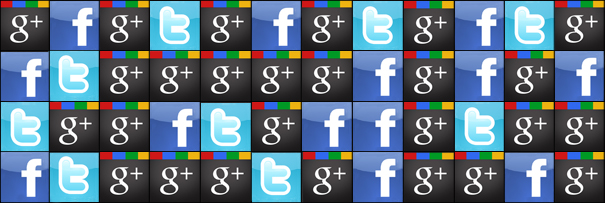
In June, Google’s navigation bar got a new look as part of the release of their own social network called Google+, which is supposed to be an extension of Google. Hence, the plus sign and why the navigation bar appears in some of their other products.
Many articles have dubbed it as, “Google’s answer to Facebook” or even a “Facebook Killer.” According to comScore, Google+ already hit 20 million visitors, while Facebook and Twitter took 2 years to reach 10 million. The reason Google+ was able to reach this number rapidly was because of the credibility behind its name, the substantial amount of Gmail users they reached out to, and not to mention all the work Facebook and Twitter did to introduce social networking.
At this point, it’s too early to make any predictions of Google+ overtaking Facebook. However, it does have a lot of potential to be an alternative based on its features and plans for growth. Most importantly, Google has taken initiative to capitalize on the effect social has on search, which is a good reason to keep an eye on it as it improves.
Google’s failed attempts at being social, Google Buzz and Google Wave were too different from the competition. This time around, they’ve decided to keep Google+ more familiar with subtle nuances by combining highlights of Facebook and Twitter, and making them better. This way, users are more prone to sign up and can learn how to use it quickly. Since it was designed by Andy Hertzfeld, one of Apple’s original GUI designers, it’s like the Mac version of Facebook. The interface is cleaner, simpler and flashier where things are done in less clicks.
The main benefit that Google has nailed for users is control of privacy. It puts friends, family and business together, but in separate rooms. This all falls under the bigger concept of sharing with their Circles feature. As the Huffington Post explained, “The Google+ network is designed around users’ social circles and lets users selectively share with specific groups within their personal network, rather than sharing with all their social connections at once.”
Now we’re not going to go into detail about the interface since there’s already a plethora of articles that provide in-depth guides and resources for Google+ such as Mashable. We’re just going to go over some key features briefly:
[portfolio_slideshow]
As for businesses, they are currently working on a separate business platform and will be implementing a test program for a few select brands and companies. For more updates on this, follow Google+ project manager, Christian Oestilien. So far, he states, “It’ll include things like rich analytics and the ability to connect that identity to other parts of Google that businesses might use on a daily basis like AdWords.” While waiting for their business platform, you should start exploring on a personal account to see how you can possibly incorporate circles, hangouts, sparks, huddles, etc. into your strategies.
Particularly, Circles could give consumers the ability to congregate brands and interact with them at their leisure. It’ll reduce clutter in the stream and make content more organized, personal and viable. This forces brands to provide more quality content for a more connected relationship. With plans to integrate Google+ into their search algorithm, conversations with and about brands could show up in search results to be shared exponentially. Even their Sparks feature has some possibility of using their search algorithm for interest-based ad targeting.
In fact, we’re already seeing innovation in Google search. On July 2, they did not renew their deal with Twitter for realtime search data. That is because Google+ author profile images and the +1 button now appear next to search results. Google is taking advantage of the notion that friends and acquaintances hold more influence than experts. It won’t be long until the +1 button starts effecting search rankings and we see profile images of our connections also appearing in search results. Personalized search results will make Google more valuable and thus, call for a more relevant advertising interaction. All this sharing will also benefit SEO greatly since it’ll be a great source of links for spiders to follow.
This is only the beginning. Just think about all the services Google already owns such as Gmail, YouTube, Android, Chrome, Maps, Calendar, Analytics and Adwords just to name a few. They plan on making their whole suite social by connecting all of their tools and applications through Google+. As they take their time to test and improve this social network in its beta phase, Google states that it is a “project”, not a “product”.
While it’s not quite a “Facebook Killer” yet, competing with it seems to be a secondary motive. Their primary motive is improving their search by integrating social, which is a great step forward in today’s social society. So producing a powerful advertising platform based on social and search data will be a major key to its success. However, the biggest challenge they face right now is convincing people to add another social network, let alone leave one in order to see these improvements in full effect. If it thrives as well as everyone hopes and predicts, then it’ll be an opportunity that both consumers and businesses should gear up for.